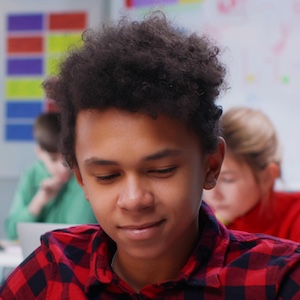
Joe
Average
The large majority of learners (66%) are like Joe, who has a balanced profile with no verbal or spatial bias.
Joe is a good all rounder – he is making progress, and his teachers are confident that he will continue to thrive in all aspects of learning. He is typically well engaged in activities related to all areas of the curriculum.
Key Questions
- Provide a well-rounded curriculum and learning experience!
*These profiles are for illustrative purposes and have been created to help introduce just some of the varied learner profiles your CAT4 data may show you, and to help support personalised learning. The profiles from your own CAT4 data may share some similarities with the example profiles but it is important to consider each learner individually.
